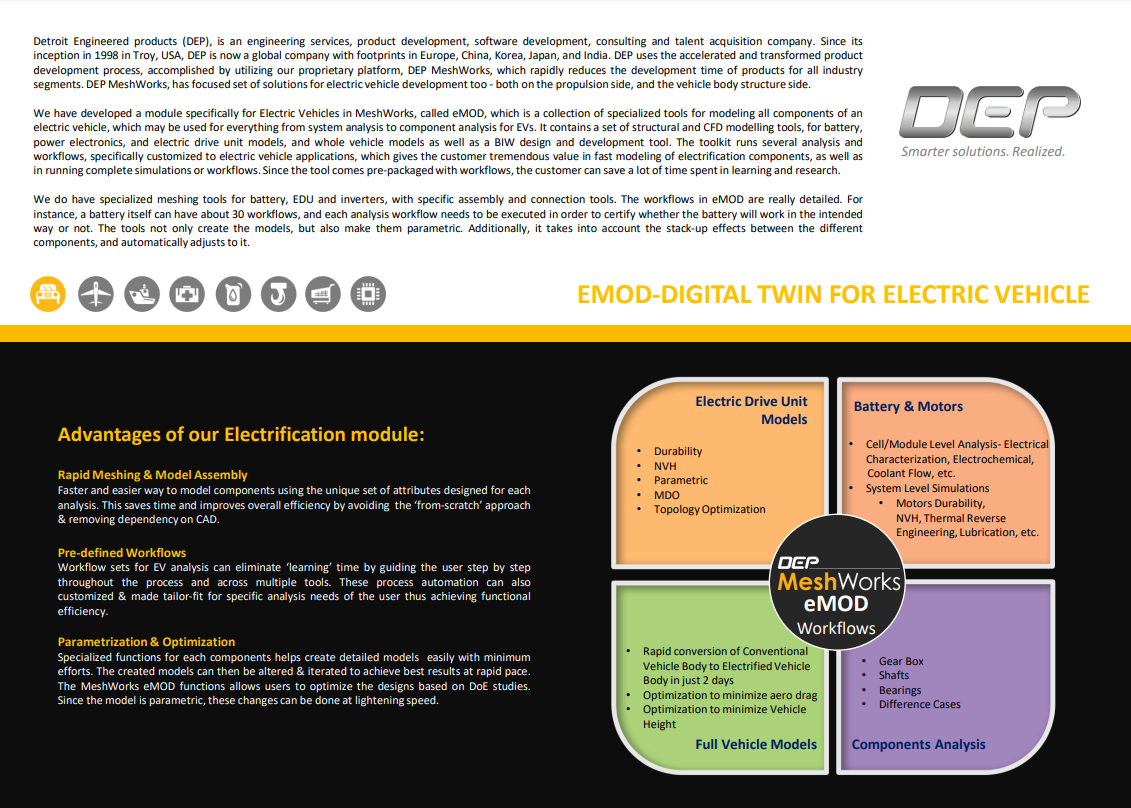Electrification Module
- High-frequency noise analysis of Electric Drive Units (EDUs)
- Electro-chemical modeling at the battery cell level
- Full vehicle-level crash simulations for battery packs
- Vehicle weight optimization through parametric design
What Does Electrification Module (eMOD) Do?
The Electrification Module (eMOD) in MeshWorks is a dedicated suite of tools built for modeling and simulation of electric vehicle (EV) systems and components. Covering every stage from system-level evaluation to detailed component-level analysis, eMOD leverages parametric CAE technology combined with automated workflows to deliver rapid, accurate, and efficient results across electrification programs.

Accelerated CFD Model Creation
MeshWorks enables a 60% reduction in CFD model build time compared to traditional CAE tools, significantly improving engineering throughput.

Performance-Driven Optimization
Parametric eMOD models support weight and drag reduction strategies that enhance vehicle range and energy efficiency.

CAD-Independent Optimization
Heat sink sizes and positions are optimized directly within MeshWorks, eliminating reliance on CAD iterations and expediting the design process.

Seamless EV Integration
MeshWorks and eMOD provide a unified platform for accurate EV system and component analysis, enabling quicker design and validation cycles.
Take a quick tour of eMOD
Watch Overview Video HereFeatures of eMOD
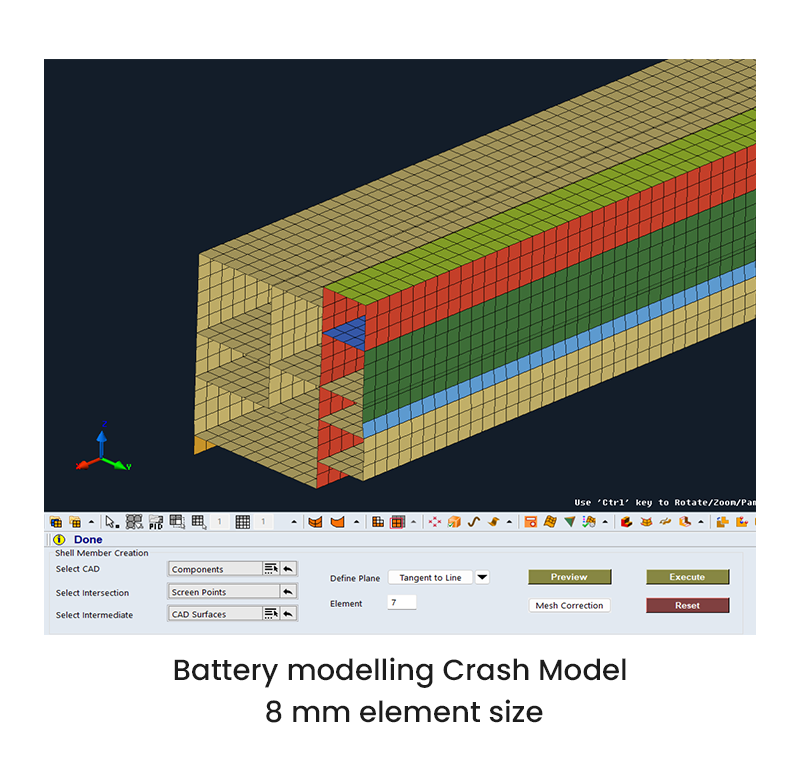
EV-Specific Meshing Tools
Enables detailed meshing at the battery cell, module, and pack levels, including EDUs and inverters.
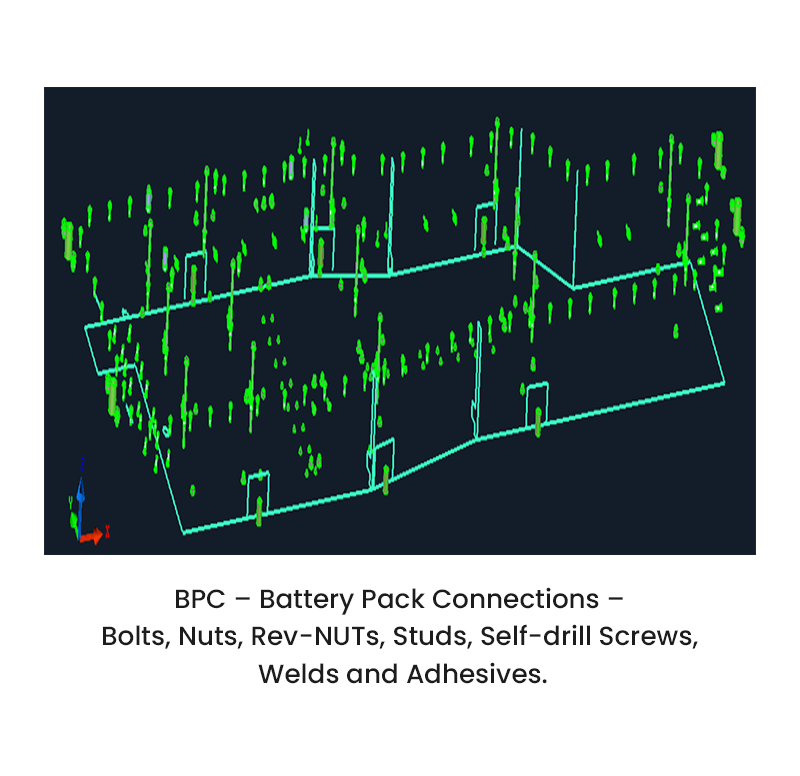
Automated Assembly Connections
Automates contact definitions such as bolt and cell connections, reducing manual setup time in EV assemblies.
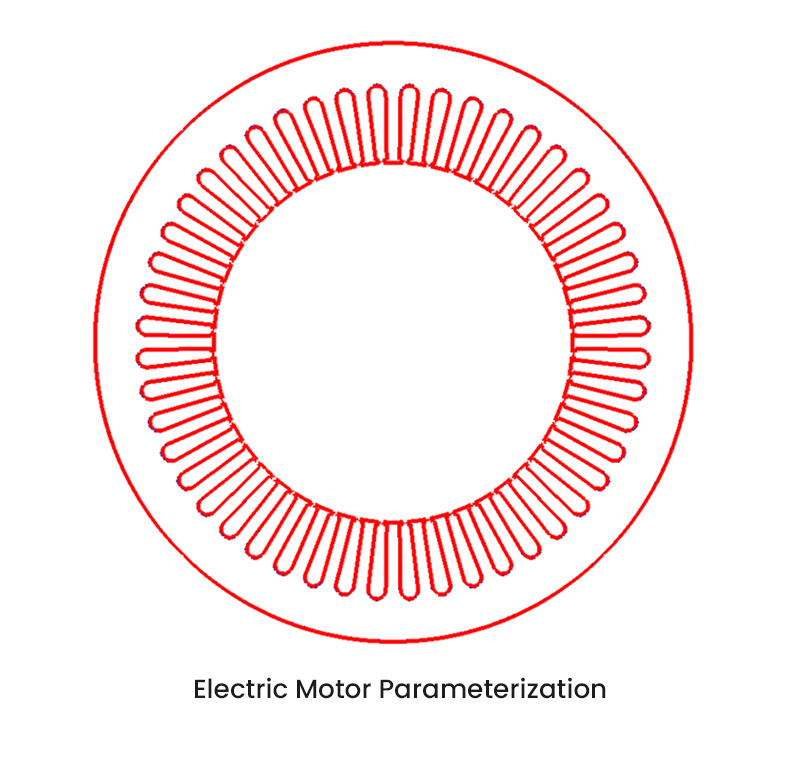
Parametric Modeling Capability
Built-in parametricity allows for rapid design updates and efficient optimization workflows.
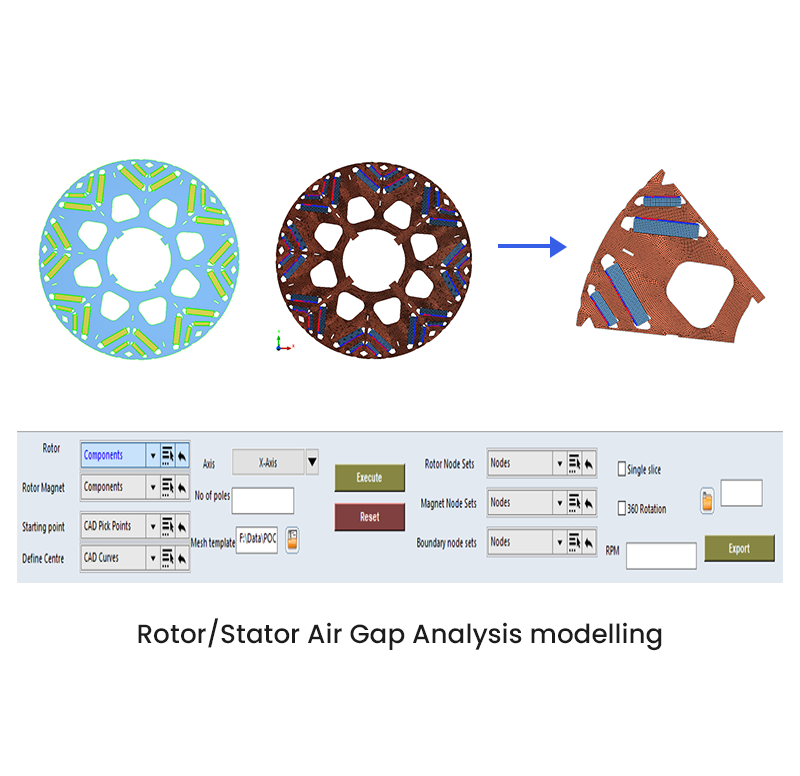
Automation for EV Applications
Integrated tools streamline CFD analysis, battery pack modeling, and finite element (FE) optimization for electric vehicles.
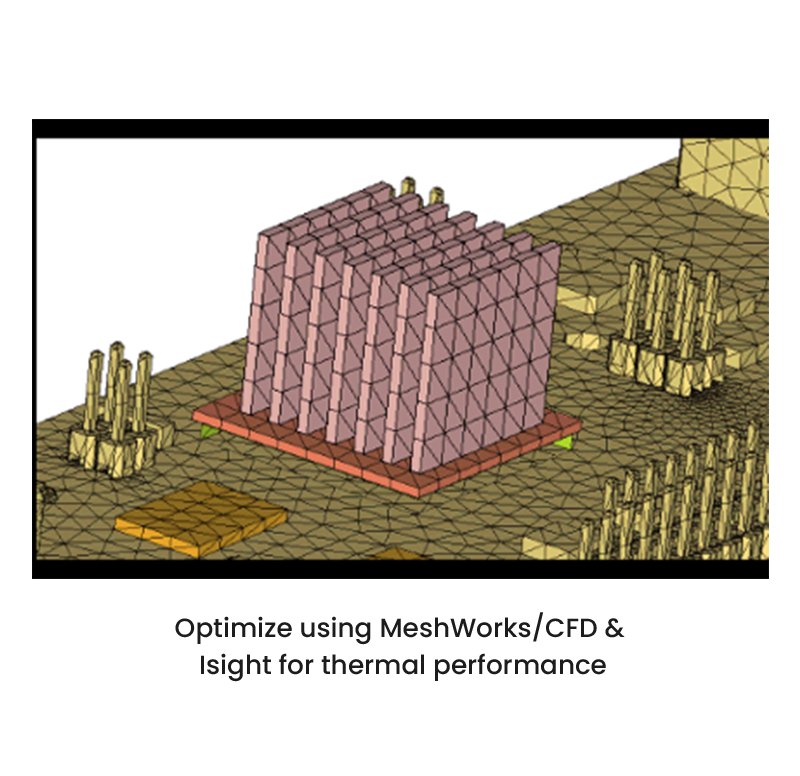
Multi-Disciplinary Support
Enables integrated studies across crash, NVH, durability, thermal, and fluid domains.
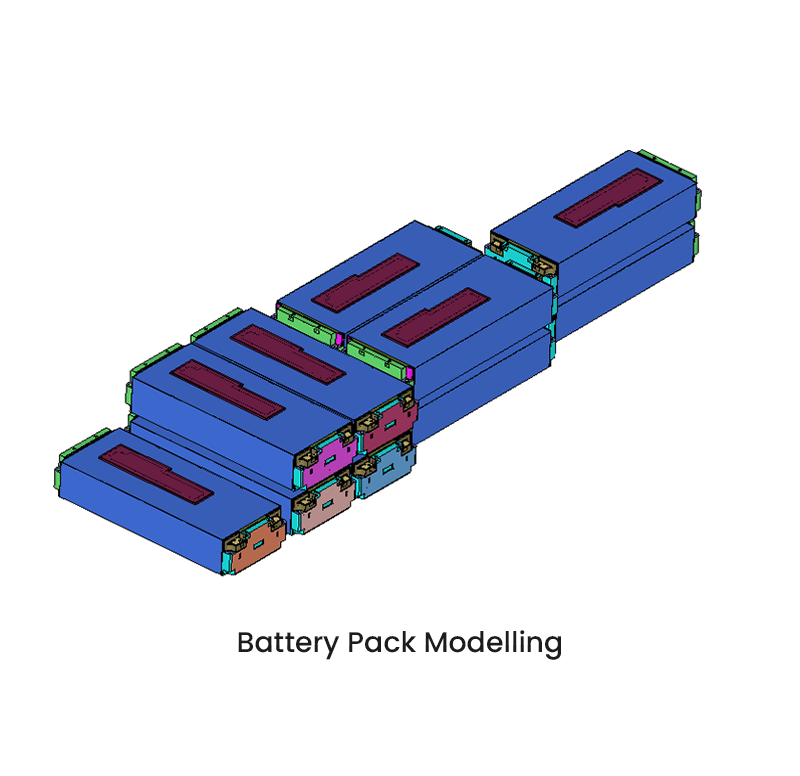
Modeling Speed and Efficiency
Provides fast turnaround times and avoids redundancy across modules, maximizing productivity.
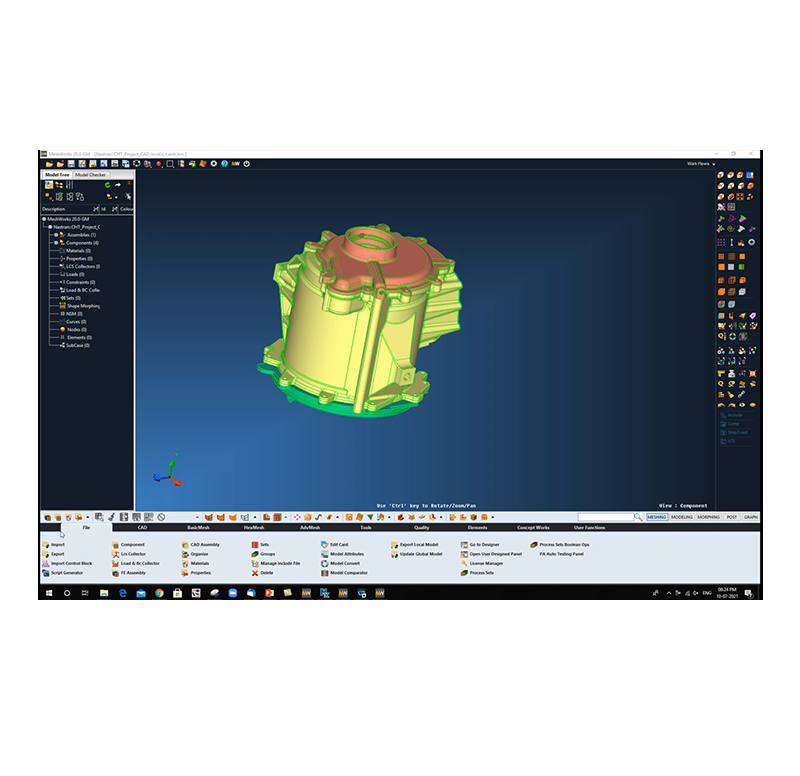
High-Speed Optimization Engine
Supports rapid design variation studies and robust optimization techniques.
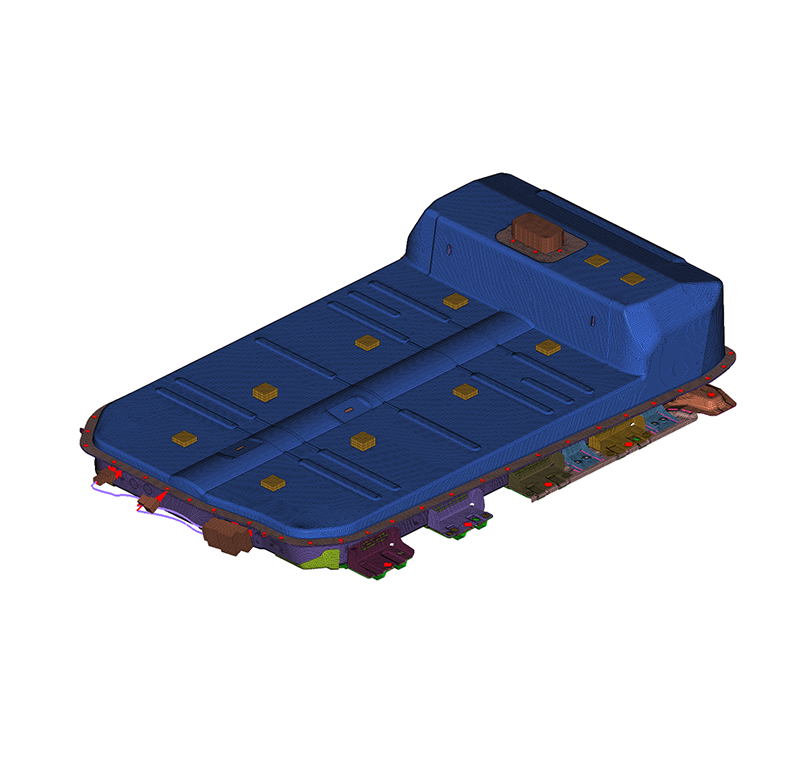
ICE-to-EV Conversion Automation
Transforms conventional ICE vehicle models into EV models in under a week using ConceptWorks.
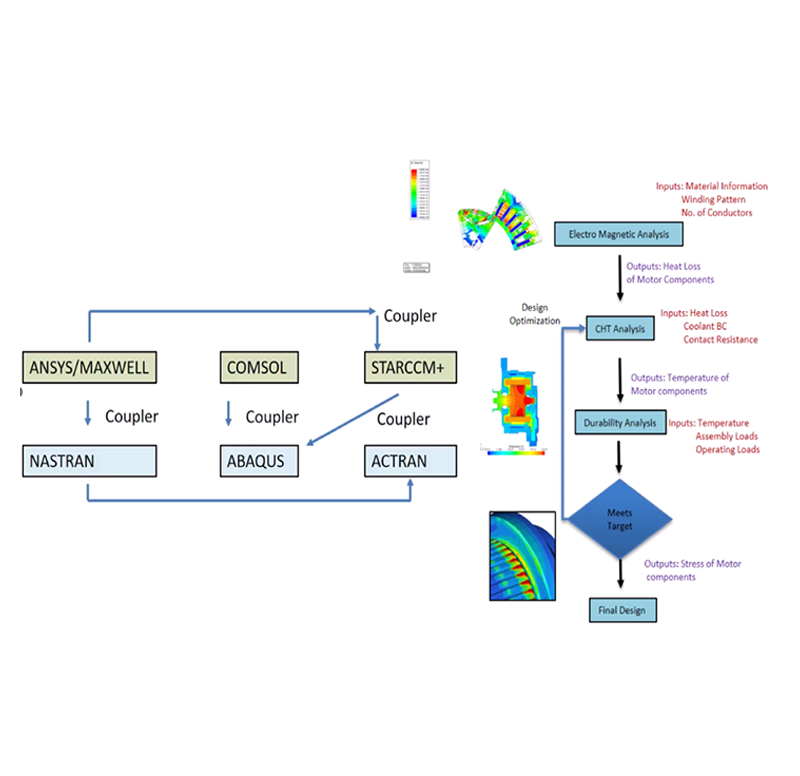
Solver Coupling Utilities
Automatically converts models between different solvers to enable integrated electrification simulations.
Get a Closer Look at DEP MeshWorks
Get all the details about our CAE platform’s capabilities, technical specifications,
and success stories.
MeshWorks Uniqueness
MeshWorks’ Electrification Module (eMOD) offers a complete environment for modeling all critical components of electric vehicles. From advanced meshing of battery cells and modules to parametric modeling of inverters and EDUs, eMOD supports detailed structural, fluid, and thermal analysis. It also includes automated tools for assembly connections, solver conversion, and design optimization – making it ideal for crash, NVH, and durability applications. The use of eMOD has led to substantial improvements in model build speed, with up to 60% time savings, while also enhancing EV performance through effective weight and aerodynamic optimization.

Dedicated EV Meshing Tools
Supports precise meshing and assembly of all major EV components, including batteries, EDUs, and power electronics.

Rapid Parametric Modeling
Enables efficient design updates and high-speed optimization through built-in parametric capabilities.

Fast ICE-to-EV Transformation
Converts traditional ICE models into EV configurations within one week using automated workflows.

Integrated Development Platform
Combines modeling, solver integration, and optimization in a single environment to streamline EV development.
Technical Brief
Deep dive into the technical strengths of MeshWorks eMOD functions with comprehensive detailing using explanatory videos

Download Our eMOD Resources
eMOD is MeshWorks’ dedicated electrification toolkit for rapid, parametric EV CAE modeling – complete with specialized meshing, solver connectivity, and ready-to-use workflows.
-
Specialized meshing for EV components
-
Parametric models with solver couplers
-
Ready-to-use electrification workflows

 Download PDF
Download PDF
Resources
Explore our library of resources to learn more
Ready to Transform Your
Product Development?
Join leading manufacturers who use MeshWorks to accelerate innovation, reduce development costs, and bring better products to the market faster.



